Differential immunological profiles in seronegative versus seropositive rheumatoid arthritis: Th17/Treg dysregulation and IL-4
- PMID: 39290695
- PMCID: PMC11405332
- DOI: 10.3389/fimmu.2024.1447213
Differential immunological profiles in seronegative versus seropositive rheumatoid arthritis: Th17/Treg dysregulation and IL-4
Abstract
Background: Rheumatoid arthritis (RA) is an autoimmune disease with various subtypes. Among these, seronegative rheumatoid arthritis (SnRA), distinguished by its distinctive seronegative antibody phenotype, presents clinical diagnosis and treatment challenges. This study aims to juxtapose the immunological features of SnRA with seropositive rheumatoid arthritis (SpRA) to investigate potential mechanisms contributing to differences in antibody production.
Methods: This study included 120 patients diagnosed with RA and 78 patients diagnosed with psoriatic arthritis (PsA), comprising 41 cases of SnRA and 79 cases of SpRA. Clinical, serological, and immune data were collected from all participants to systematically identify and confirm the most pivotal immunological distinctions between SnRA and SpRA.
Results: (1) SpRA demonstrates more pronounced T-helper 17 cells (Th17)/Regulatory T cells (Treg) dysregulation, vital immunological differences from SnRA. (2) SpRA exhibits higher inflammatory cytokine levels than SnRA and PsA. (3) Lymphocyte subset ratios and cytokine overall distribution in SnRA close to PsA. (4) Interleukin-4 (IL-4) emerges as the central immunological disparity marker between SnRA and SpRA.
Conclusion: Th17/Treg imbalance is one of the vital immunological disparities between SnRA and SpRA. Interestingly, PsA and SnRA display similar peripheral blood immunological profiles, providing immunological evidence for these two diseases' clinical and pathological similarities. Furthermore, IL-4 emerges as the central immunological disparity marker between SnRA and SpRA, suggesting its potential role as a triggering mechanism for differential antibody production.
Keywords: T-helper 17 cells; biomarker; interleukin-4; regulatory T cells; seronegative rheumatoid arthritis.
Copyright © 2024 Li, Su, Guo, Su, Gao, Li and Wang.
Conflict of interest statement
The authors declare that the research was conducted in the absence of any commercial or financial relationships that could be construed as a potential conflict of interest.
Figures
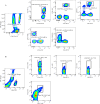
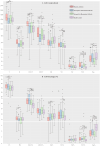
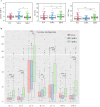
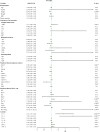
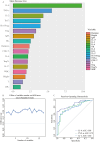

Similar articles
-
Clinical management of seronegative and seropositive rheumatoid arthritis: A comparative study.PLoS One. 2018 Apr 6;13(4):e0195550. doi: 10.1371/journal.pone.0195550. eCollection 2018. PLoS One. 2018. PMID: 29624625 Free PMC article.
-
Differing X-ray patterns in seronegative and seropositive rheumatoid arthritis.Clin Rheumatol. 2019 Sep;38(9):2403-2410. doi: 10.1007/s10067-019-04602-5. Epub 2019 May 23. Clin Rheumatol. 2019. PMID: 31123977
-
A comparative study on the clinical and magnetic resonance imaging features between seronegative and seropositive rheumatoid arthritis.Clin Exp Rheumatol. 2024 Jan;42(1):77-85. doi: 10.55563/clinexprheumatol/9lfvfy. Epub 2023 Jul 14. Clin Exp Rheumatol. 2024. PMID: 37470243
-
When Autoantibodies Are Missing: The Challenge of Seronegative Rheumatoid Arthritis.Antibodies (Basel). 2023 Oct 31;12(4):69. doi: 10.3390/antib12040069. Antibodies (Basel). 2023. PMID: 37987247 Free PMC article. Review.
-
The role of interleukin-6 signalling and its therapeutic blockage in skewing the T cell balance in rheumatoid arthritis.Clin Exp Immunol. 2017 Jul;189(1):12-20. doi: 10.1111/cei.12966. Epub 2017 Apr 20. Clin Exp Immunol. 2017. PMID: 28369786 Free PMC article. Review.
References
-
- Reed E, Hedström AK, Hansson M, Mathsson-Alm L, Brynedal B, Saevarsdottir S, et al. . Presence of autoantibodies in "seronegative" rheumatoid arthritis associates with classical risk factors and high disease activity. Arthritis Res Ther. (2020) 22:170. doi: 10.1186/s13075-020-02191-2 - DOI - PMC - PubMed
MeSH terms
Substances
Grants and funding
LinkOut - more resources
Full Text Sources
Medical
Research Materials
Miscellaneous

